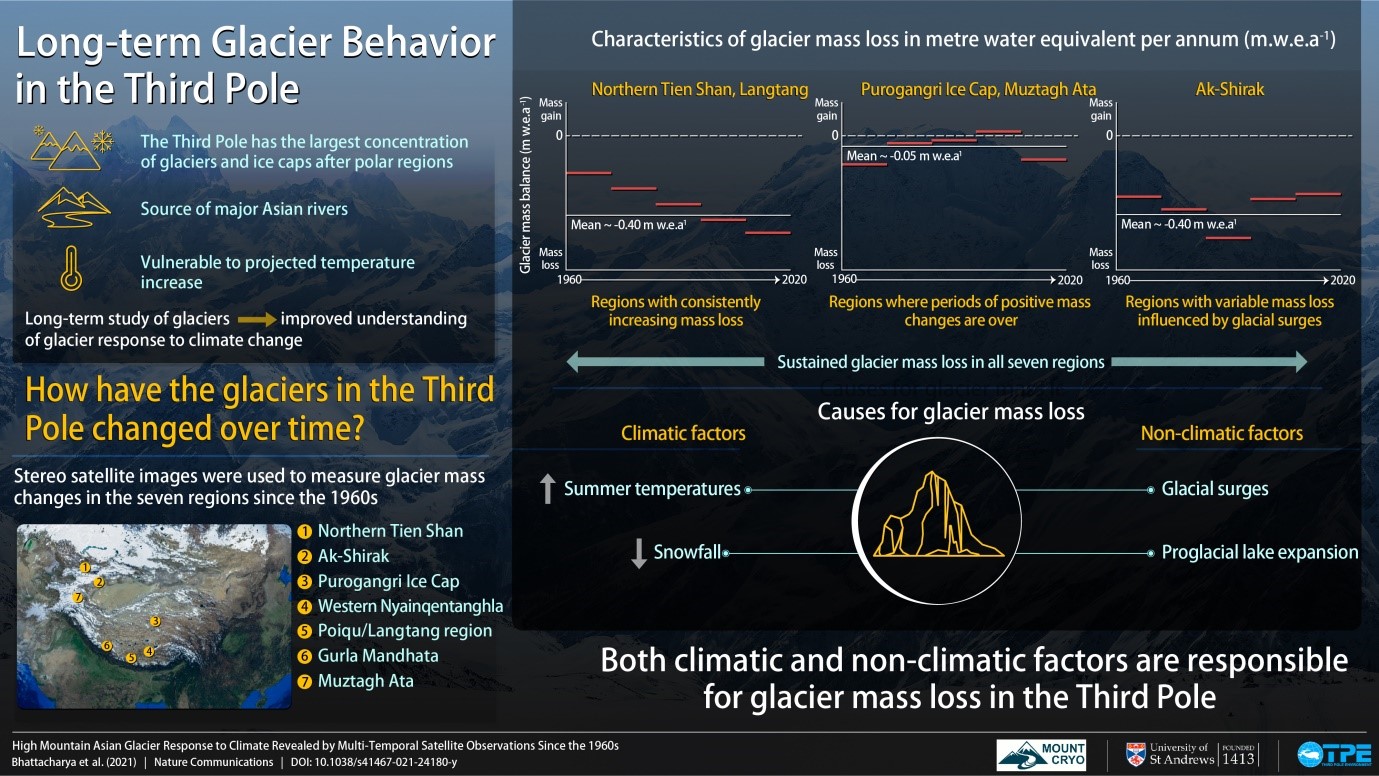
Glaciers in High Mountain Asia have been melting more quickly in recent years due to rising summer temperatures. Glacier melt prevails now even in areas where glaciers were previously growing, according to a study led by the University of St Andrews.
The study was published in Nature Communications on July 5.
The behaviour of glaciers provides the clearest indication of the impact of climate change in high mountain regions. The glacierized regions of High Mountain Asia are the source of some of Asia's largest rivers, which hundreds of millions of people rely on for their basic needs.
Using satellite data, the glaciologists examined the behaviour of glaciers in various regions across High Mountain Asia. The results have implications for future projections of ice loss from the region and raise concerns about the sustainability of the region's glaciers as a reliable water source in decades to come.
Lead author Dr. Atanu Bhattacharya from the University of St Andrews, who recently moved to JIS University, Kolkata, India, said: "The results show just how much glaciers have thinned and receded since the 1960s and provide the first multi-temporal record of glacier fluctuations in several regions of High Mountain Asia including the Himalaya, Tibetan Mountain Ranges, Tien Shan and Pamir over almost six decades."
"The rate of mass loss from glaciers across most regions of High Mountain Asia has consistently increased since the 1960s and ice loss is now occurring even in regions where glaciers had lost little mass for several decades," said Dr. Tobias Bolch from the University of St Andrews, who initiated and guided the study.
The work also examined the link between glacier mass loss and the changing climate. The team combined measurements from a network of high-altitude weather stations with modelled climate data to examine the main climatic drivers of ice loss in different regions across High Asia.
"This study makes a great case for observation and modelling integration as well as international collaboration," said Dr. YAO Tandong from the Institute of Tibetan Plateau Research of the Chinese Academy of Sciences, co-author of the study. YAO is the co-chair of Third Pole Environment (TPE), an international science program that enabled data sharing of the study through Pan-TPE, a TPE related science project.
Dr. Kriti Mukherjee of the University of Northern British Columbia, Canada, said: "The results show that substantial increases in ice loss rates have been primarily driven by higher summer temperatures while changes in precipitation have driven the variability."

Long-term glacier behaviour in the Third Pole (Image by TPE)

86-10-68597521 (day)
86-10-68597289 (night)

52 Sanlihe Rd., Xicheng District,
Beijing, China (100864)

